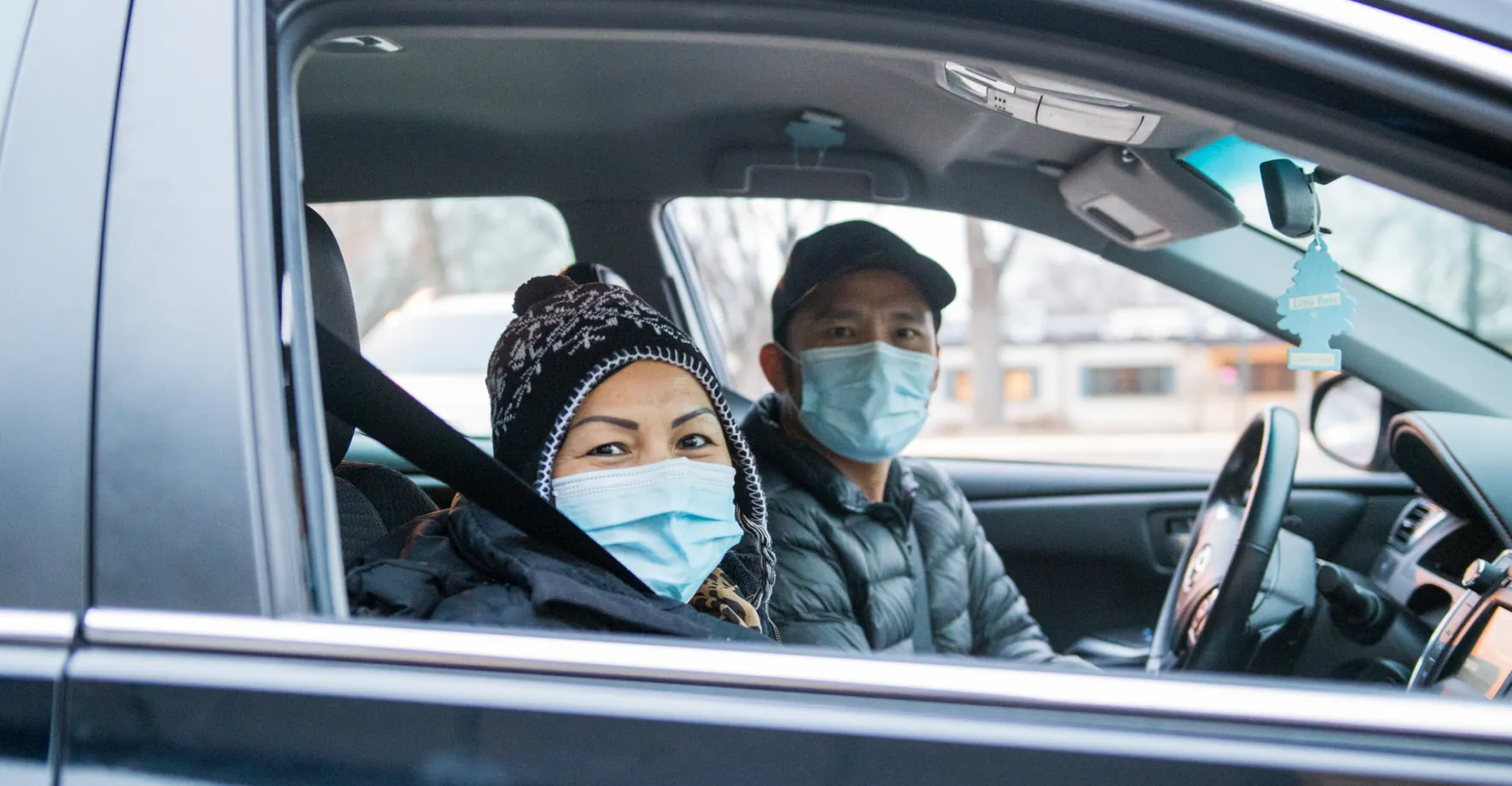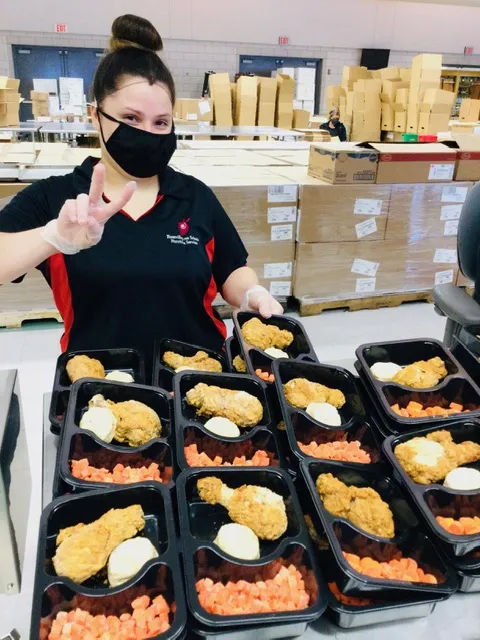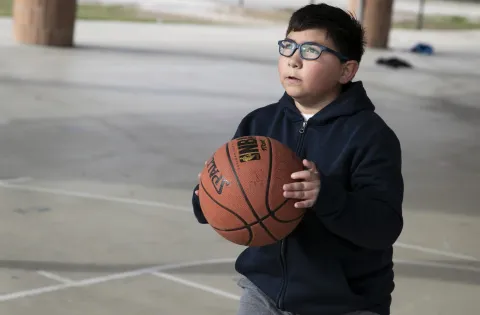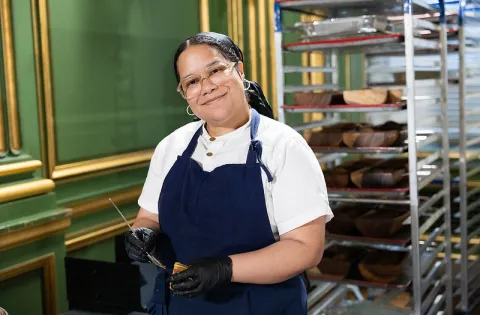1 in 6 kids could be facing hunger this year. Even with efforts to have enough meals for all kids, many still face a wide range of barriers to accessing the food they need to grow and thrive.

The obstacles are many, and the coronavirus crisis has made things more challenging. Some food distribution centers may be located too far away for families without consistent access to reliable transportation. The times of meal distribution may not work for the schedules of families with essential workers. The meals themselves may not reflect all of the community’s cultural, religious, and dietary preferences.
Perhaps the advertisements for a local meal program are only written or spoken in English, making it difficult for families who speak languages other than English to get the information. Even though meals are free for all, many families with immigration status still fear accessing public benefits programs at all.
A school district in Minnesota has relied on innovation and creativity, involving kids and families in both the design and delivery of summer meal programs.
“In our district, equity is in our mission statement, so we really tried to make all decisions through an equity lens,” shared Maria Anderson, nutrition coordinator at the Roseville Area Schools.

Before the pandemic, Angela Richey, nutrition services supervisor, developed innovative programs to ensure every kid in their economically and culturally diverse district was included. They empowered students to share their voices about the menu through taste tests, supported the community by sourcing local products, and featured various dishes representing the kids’ diversity, such as chana masala and beef bulgogi meatballs.
They didn’t forget about their mission at the onset of the pandemic. Even when the district stepped up to provide childcare for essential workers, the question in everybody’s mind was, ‘how are we going to feed the kids?’
Anderson and her team immediately connected to social workers and cultural liaisons to understand each student’s situation and find the best way to reach them. They also recognized the importance of listening to the families they were serving to inform the meal program’s design.
“Last year, we didn't have that immediate feedback from kids because of distance learning, so we relied on relationships,” shared Anderson. “The people that hand out the meals every week know the families, and they get really comfortable with giving feedback.”
She added that they didn’t have a one-size-fits-all solution to receive feedback from families. They reached them through social media, robocalls, paper handouts, and other methods.
Through this feedback, they were able to identify the barriers that students and families could be facing to access and consume these meals.
For some families, it was more accessible to pick up the seven meals of the week at once rather than returning every day. Other parents were experiencing homelessness or didn’t have access to a full kitchen, so they made sure they received ready-to-eat meals that only required a microwave to heat up.

In the summer, the district had several bus routes and curbside food distribution centers in several locations. When fall came, the department increased their direct-to-home deliveries and curbside food distribution locations. At the same time, they constantly worked to ensure there were no missing students and incorporated families’ feedback in recipes and ways of distributing the food.
The work has been exhausting, but Anderson and Richey feel energized by everybody’s commitment to the mission. From custodians to external partners like Second Harvest Heartland, the program’s impact on kids motivates and energizes the community.
During a Friday family-style meal hosted by Second Harvest Heartland, a mom expressed her gratitude for having a chance to sit down and have a meal with her kids. She is a nurse with a busy work schedule and was unable to do it otherwise.
Anderson described the interaction with this mom. “She reached out many times with the same comment.‘If it wasn't for you guys, my kids would not see anything besides like Pop-Tarts all year.’ We are glad to take that extra mental load, especially from our medical staff.”
Kids and teens also were able to connect with their school community via the food program, despite both looking so different during the pandemic.
“We had a mom who didn't know how excited her daughter would be to have school yogurt. It's just yogurt, but her favorite part of school was coming to their home. We’ve been trying really hard to make things a little bit more normal for kids,” said Anderson.
Today about 70% of students have returned for in-person school.
Anderson and Richey’s school is an exemplary case of how school districts can identify and address the barriers kids and teens may face in accessing school meals by involving families in the design of the meal program.
No Kid Hungry’s Center for Best Practices has looked at Anderson’s and other similar meal programs across the country to develop tools to support school districts in creating more inclusive meal programs.
One of the resources is a toolkit called Conversation Starters, with a series of questions designed to identify barriers and generate ideas to engage students and families in creating a meal program.
Another resource, Let Your Community Shape Your Program, highlights ways that meal programs providers can intentionally engage kids and families in designing and delivering meal programs, including examples from across the country.
No Kid Hungry also hosted a workshop including speakers like Maria Anderson and other leaders, who shared their experiences and actionable steps that schools can implement in their communities. Participants spent a portion of the workshop designing an action plan to bring to their school districts.
These programs impact the millions of kids who encounter obstacles to getting the nutrition they need to thrive.
Anderson encouraged others to take small steps and work on building relationships with the school community. Working as a team is essential for understanding and addressing the challenges kids face.


